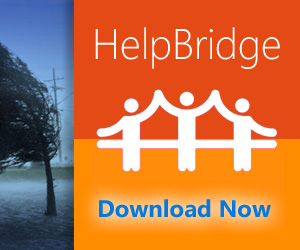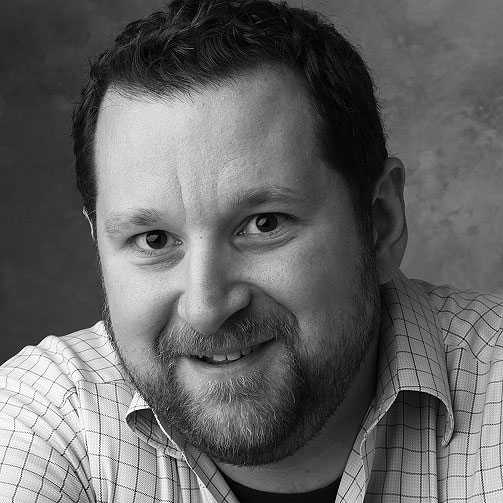REDMOND, Wash. – Jan. 16, 2013 – “I need help.” “I want to know whether my friends and family are OK.” “I want to help.”
Those tend to be the three main reactions after natural disasters strike, said Tony Surma, chief technology officer for Microsoft’s Disaster Response team.
 HelpBridge, a free new mobile app from Microsoft, aims to support those primary needs. Available today in the U.S. for Windows Phone, Android, and iOS, HelpBridge is designed to make it easy to connect with friends and family during a large-scale disaster such as an earthquake or a hurricane. It also enables users to give time, money and resources to support relief and rebuilding efforts.
HelpBridge, a free new mobile app from Microsoft, aims to support those primary needs. Available today in the U.S. for Windows Phone, Android, and iOS, HelpBridge is designed to make it easy to connect with friends and family during a large-scale disaster such as an earthquake or a hurricane. It also enables users to give time, money and resources to support relief and rebuilding efforts.When disasters occur, the first thing people who were impacted want to do is to reach friends and family, said James Rooney, program manager for Microsoft Citizenship’s Technology for Good program, which developed the app. HelpBridge lets users build a list of friends and family they would want to contact in an emergency. With a few swipes, they can let all those contacts know via SMS, email or Facebook if they’re OK or if they need help. The alert can also give a user’s exact location via their phone’s GPS capabilities.
HelpBridge also provides three easy ways to support relief and recovery efforts in the wake of a disaster, Rooney said. People can use the app to donate funds quickly to a broad range of relief agencies including the American Red Cross, CARE and Global Giving. They can also find out what goods and resources relief agencies on the ground need — making sure they send items such as tents, gloves, and pet food to the right places. Finally, HelpBridge lists real-time volunteering opportunities posted by relief agencies, enabling users to directly or indirectly support relief efforts with their time.
HelpBridge grew out of Microsoft’s longstanding commitment to disaster response, Surma said. His global team leverages the company’s technology to help relief agencies, nonprofits, and governments respond when a natural disaster occurs. Microsoft has gained valuable knowledge and insight into these crises through its work, he said.

During recent natural disasters such as the ones that struck Haiti and Japan, Microsoft’s global response team saw technology spin up to help people connect with friends, family and relief efforts, Rooney said. But those technologies tended to be built quickly, were specific to the disaster region, and became obsolete in the weeks and months after a disaster.
Rather than recreate technology after each disaster, why not build something “disaster-agnostic” and have it in place no matter where or when disaster strikes? That was the initial spark behind HelpBridge.
The team focused first on helping people connect with loved ones through their smartphones, which have become key communication tools when disaster strikes, said Gisli Olaffson, Emergency Response Director for NetHope. “The simpler we can make it for people to let others know if they are fine or if they need assistance, the more likely they are of being able to get that information out,” he said. “Microsoft’s HelpBridge mobile app is a great addition to the tools people have for reporting their needs and their status following any natural disaster.”
Microsoft also worked with a range of relief agencies and nonprofits as it developed HelpBridge. Rather than reinvent the wheel, it talked to partners such as the Mobile Giving Foundation, VolunteerMatch, Aidmatrix and Network for Good to help users make an impact, Surma said. “We really wanted to provide a breadth of opportunities to match the breadth of generosity people provide after a disaster.”
Tying everything together on the back end is Microsoft Windows Azure, an open and flexible cloud platform that makes all the different services easy to use and incredibly reliable, he said.
Surma encouraged consumers to download HelpBridge and take a few minutes to set it up.
“When disaster strikes, you don’t want to be fumbling with your phone and trying to find your mom’s number,” he said. “Spending a little time now can pay off in spades.”
Likewise, Rooney hopes the app can help facilitate giving when disasters strikes. He pointed to the millions of people who have responded in the wake of Hurricane Sandy, which will likely be the most expensive disaster in U.S. history. HelpBridge could have helped donors find new ways to give.
“People have been extremely generous donating their time and money after Sandy,” he said. “HelpBridge could be a simple way to bump up donations or help people find new volunteer opportunities. If we can direct consumers to give easily, that’s really what it’s all about.”





